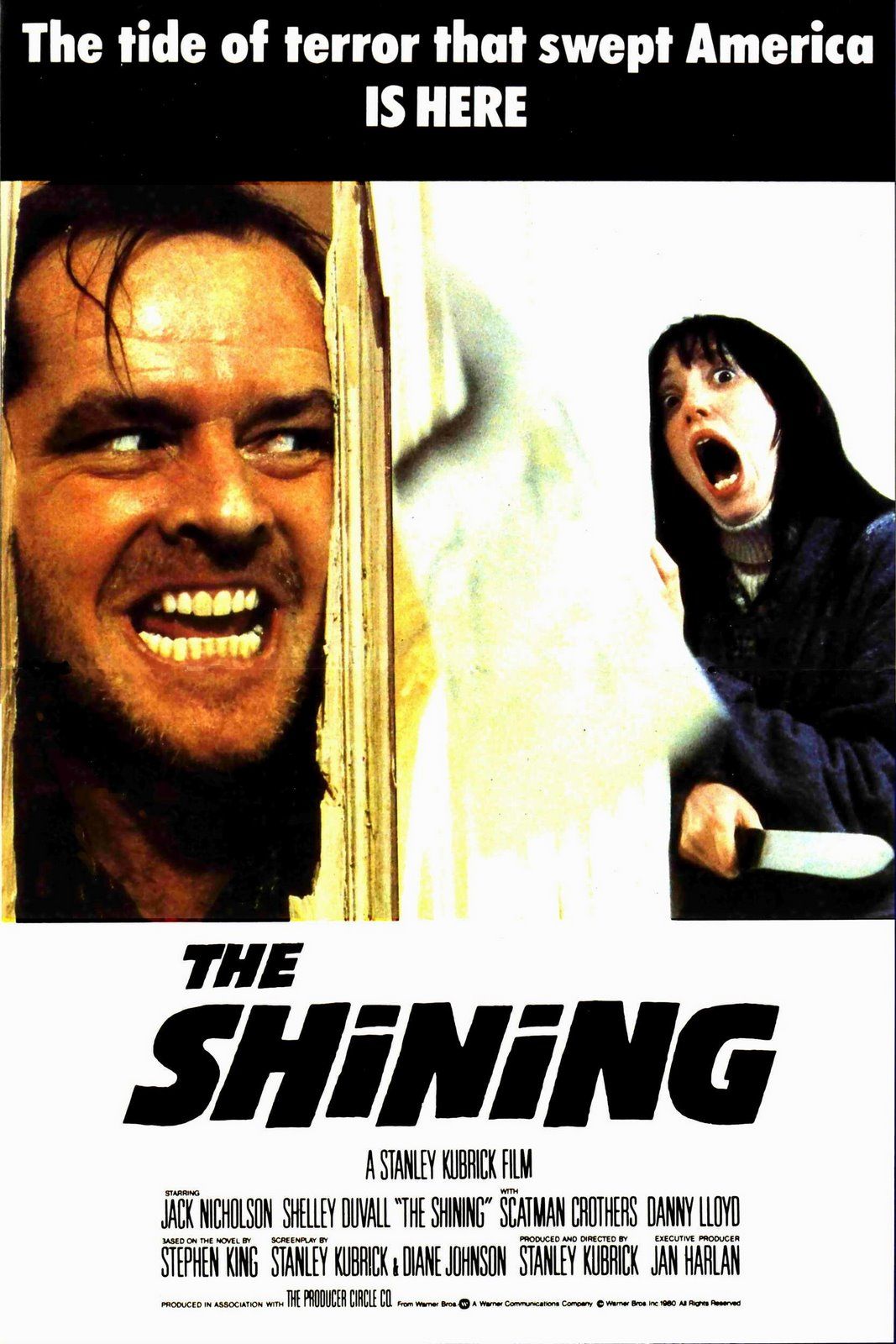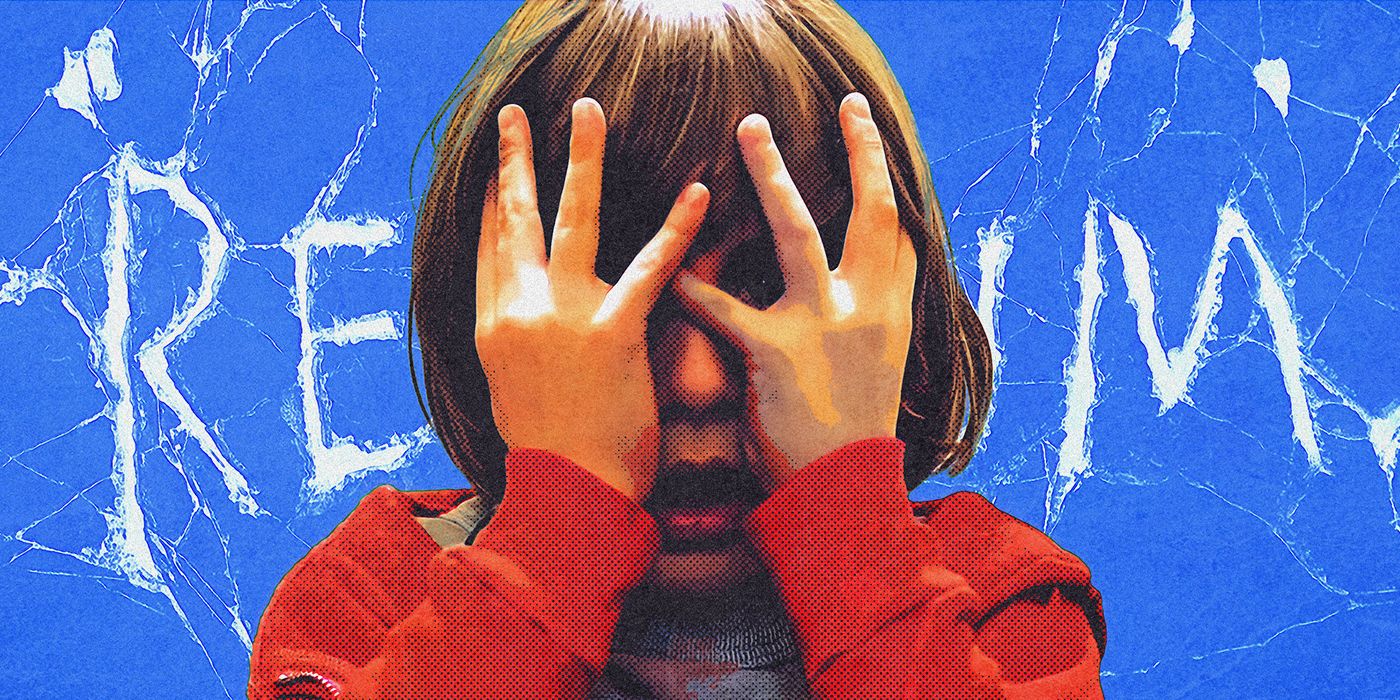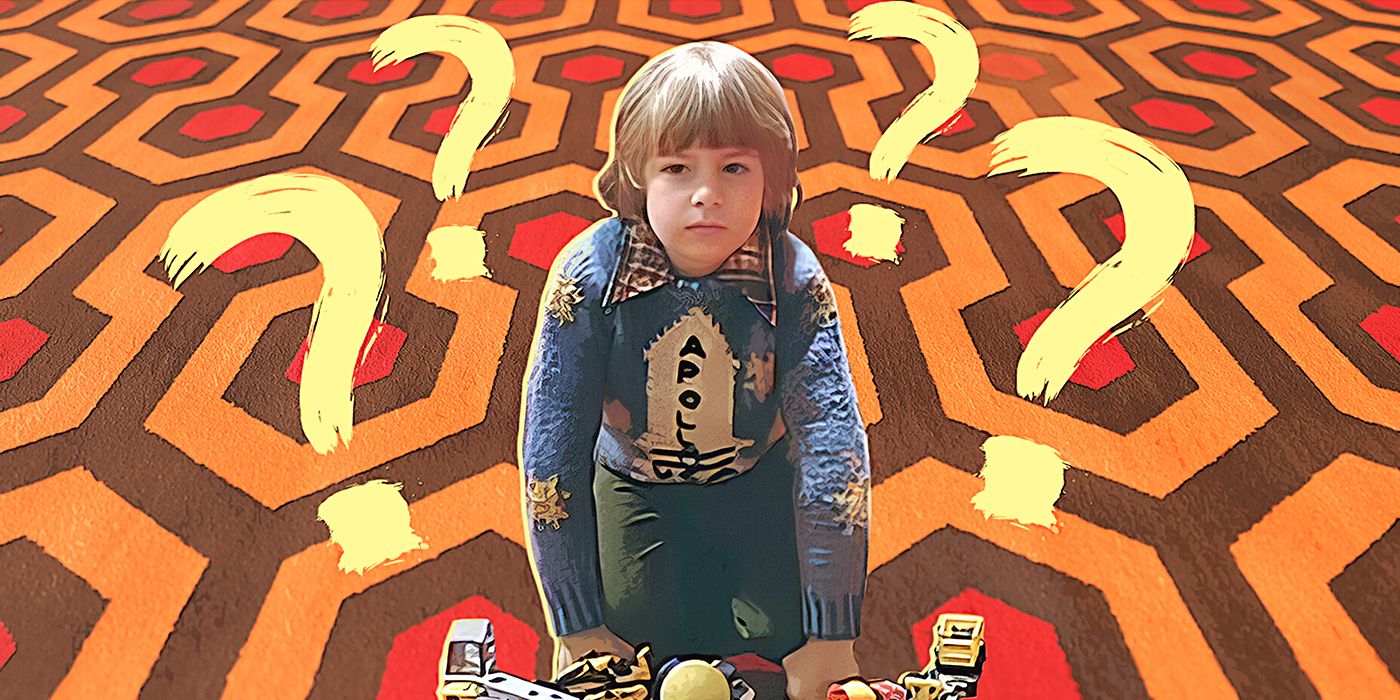The Big Picture
- The Shining's iconic carpet, designed by David Hicks, may hold eerie significance with the number six symbolizing the Devil's presence.
- Kubrick's use of hexagonal carpets could hint at a strategic chess game being played out with the characters in the film.
- The carpet's design, inspired by Hicks, adds depth to the film's unsettling atmosphere and continues to intrigue viewers with hidden meanings.
Often hailed as one of the best horror films ever made, Stanley Kubrick's The Shining continues to leave audiences in all kinds of states, from fear to curiosity. Famous for the psychological impacts on the characters and movie-goers alike, Kubrick's 1980 hit film draws in theories, analysis, and a cult following for a range of reasons. One of them is the alluring carpet that adorns the hallways in the film's set location, the Overlook Hotel. Upon first glance, it may seem like just another art deco movie prop, and an element of the design aimed to bring color or symmetry to the film. But eagle-eyed fans and theorists would tell you otherwise. The Shining's carpet has seen its fair share of commentary and investigation, and all evidence points towards something spooky. So, what is the deal with this strange carpet? Why can't we take our eyes off it? The number six, clairvoyance, and chess, that's what!

The Shining
A family heads to an isolated hotel for the winter where a sinister presence influences the father into violence, while his psychic son sees horrific forebodings from both past and future.
- Release Date
- May 23, 1980
- Director
- Stanley Kubrick
- Cast
- Jack Nicholson , Shelley Duvall , Danny Lloyd , Scatman Crothers , Barry Nelson , Philip Stone
- Runtime
- 146 minutes
- Main Genre
- Horror
- Studio
- Warner Bros.
Where Did 'The Shining' Carpet Come From?
Set in the Rocky Mountains, The Shining follows the story of newly hired caretaker Jack Torrance, played by Jack Nicholson, as he and his family encounter an array of dangerous, ghostly presences while staying at the Overlook Hotel. It all begins when Jack's son Danny (Danny Lloyd) has a premonition and then a seizure. The hotel's head chef, Dick Halloran (Scatman Crothers) tells young Danny that he has a psychic ability that the chef calls "the shining," and that the hotel also has a shine due to troublesome past events. But most importantly, avoid Room 237. What follows is nothing short of the stuff of nightmares, from ghostly twins to Jack's chilling mental decline. Yet, ever-present is the now infamous hexagonal red, orange, and black carpet that lines every hallway of the hotel. With little production information left on offer about the film's development, it was difficult to establish where this carpet came from. That was until eager theorists tracked the design back to famed interior designer David Hicks, as first reported in a 2017 feature from Film & Furniture's Paula Benson. According to Benson's extensive research, Hicks was well known for his blend of aristocratic and contemporary design and went on to even refurbish King Charles III's first Kensington apartment.
The Hicks family has clarified in the past that while Hicks never formally worked on film sets or production design, his carpets were sold widely for a time and have been known to end up in odd shops. The designer's son, Ashley Hicks, left an interesting comment in an article by Graphic Journey stating that though his father never worked for Kubrick, he wishes he had. "Though I fear it would have been one ego too many," he said, adding how the director had copied Hicks' carpet for the film. However, per Benson's research, we can conclude that Hicks and Kubrick did not know each other, and the choice of styling the carpet in the hotel didn't come about via collaboration. The carpet, while eye-catching, is not a lonesome design choice; however, as many other locations in the hotel feature elaborate and colorful carpets and patterns, all of which tug at the mind in the midst of hiding behind pillows and blankets. Since the release of the film and the discovery of Hick's involvement, the design has been dubbed "Hicks' Hexagons" as initially remarked by Film & Furniture, an ode to the art that inspired such unease. But what does this carpet really mean? Why did Kubrick make a carpet stand out in such a way that people still can't grasp it decades later? The answer could be darker than the film itself.
Does the Number 6 Have Anything to Do With It?
Across many of the theories about this carpet, including the unprecedented insight shared by Benson for Film & Furniture, is the overwhelming focus on the hexagonal shape that marks out the distinct colors on the hotel floors. The shape itself is bold, and hexagons are often used by companies and artists to draw strict attention to their subject. But something is different about these hexagons, almost as if their shape isn't a coincidence at all. Many have highlighted the possible importance of the shape because of the number of sides it has: six. As all lovers of horror and fanatics of the dark are aware, six is the number of the Devil. Used across films and ghost tales alike to signify the presence of the demonic, the number six goes back to the Bible and the origins of Christianity. The numbers three and seven are considered to be the holiest numbers across the Christian denominations as they represent wholeness and purity and are seen as complete numbers. On the other side of that, six, as opposed to seven, is incomplete, and worse yet, three sixes are inherently deficient numbers. This is why 666 is hailed as the number of the Beast — because it represents the incomplete and thus unholy nature of the Devil himself.
That brings us back to The Shining, where arrangements of sixes are splayed across the hallways in scenes depicting ghouls tormenting the poor Torrance family. Could it be that Kubrick recognized this numerical significance and deepened the dark lore of the Overlook Hotel by literally planting the Devil's number everywhere? The significance of the number six doesn't end there. There's the theory that the number itself could have also been a hint towards the idea of a sixth sense. The sixth sense is the idea of a supernatural or spiritual capability outside the five tangible senses we are aware of today. Often called clairvoyance, the sixth sense is thought to be the ability to see or communicate with ghosts and spirits from the other side, which in this case, relates to "the shine" effect of the hotel and Danny's ability to see the ghosts. Planting indications of a sixth sense physically across the map in front of both the characters and the audience could have been Kubrick's attempt to foreshadow what was to come, or even to heighten the feeling of suspense and otherworldliness that the film inspires. So, the shape of the carpet means something dark; its colors and arrangement could be a nod to the demonic, as is the plot of the film. But there has to be more. What is it about the blend of Kubrick's mind and this carpet that completes the aura of fear across every shot?
Is Stanley Kubrick Playing a Game With the Audience?
Kubrick was known for his love of war and strategy, particularly films and games relating to these. He was subsequently known to be a chess enthusiast, which, on the surface, may seem like a completely unrelated fact. Or is it? Film lovers and conspiracy theorists alike have suggested that the layout of the carpet may have utility beyond just decorative appeal. Besides inferring messages based on how many sides they have, the hexagons on the carpet might actually be serving a purpose to the plot and style of the film. Kubrick was a lover of symmetry when it came to his filmmaking, and many of his most celebrated films feature beautifully constructed shots whereby characters and objects are aligned in certain ways to create structured and alluring shots. The hexagonal carpet may have greatly lent itself to Kubrick's style, which could have been a driving force behind the film's use of it. However, theorists like Benson at Film & Furniture argue that when considering the director's love for chess and symmetry, the idea that a game of chess is being played in the film isn't that far-fetched. If you watch closely, the birds-eye-view shots of Danny playing on the floor during the film show the child without moving from his spot, ending up on different hexagons when the frame switches back to him. When considering the efforts crews go to ensure the coverage and plot of the film are being done correctly, this was no mistake.
In an exploration from Juli Kearns of Idyllpus Press, it is further believed that Kubrick intentionally moved characters along the carpet to solidify the idea that the Torrance family was being played by the hotel and its spirits, like a game of chess. Danny and his family were being moved like pawns throughout the hotel without realizing it. Therefore, the carpet is the game board on which Kubrick strategically moves the plot forward until the characters reach their breaking point and the shine takes full effect. This idea would make the film's overall theme and presence even more horrifying because it would mean it wasn't just the ghosts or the hotel haunting the family. Instead, it was Kubrick and his carpet playing mind games with the characters and the audience. Without knowing it, we watch a tense game of chess played out in front of us, with every hexagon forward meaning a step closer to chaos. This theory makes great sense of the alluring nature of the carpet, as its symmetry and possible role as a game board only strengthen the confusing and uncanny nature of the film.

This Iconic Stanley Kubrick Scene Took 148 Takes to Get Right
'The Shining' holds a Guinness World Record that is unlikely to be broken any time soon.With decades having passed since Kubrick's iconic horror piece was released, it's unlikely we'll ever get confirmation on any of these theories or their legitimacy. But The Shining remains legendary for its breakthrough depiction of horror and cinematography and is still one of the most beloved and haunting films worldwide. While these hypotheses may never get vindicated, it truly speaks to the scope of cinema that something as mundane as a carpet can stir up years' worth of analysis, wonder, and fear. The carpets design itself has since been copied and featured in hotels, museums, and homes alike, and repeatedly makes its way back into the collective consciousness. With hexagons, the Beast, the spiritual plane, and chess all possible answers, the truth behind Hick's carpet remains a mystery.
The Shining is currently available to stream on Max in the U.S.

